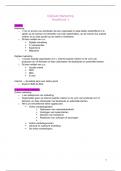Notes de cours
Full lecture note of Culture and Diversity at Work
- Cours
- Établissement
These are the lecture notes of all the lectures of Culture and Diversity at Work. I got an 8,5 by studying these notes. I've watched back every lecture to make my notes as complete as possible. Considering he repeated himself a lot I have omitted things he repeated.
[Montrer plus]












